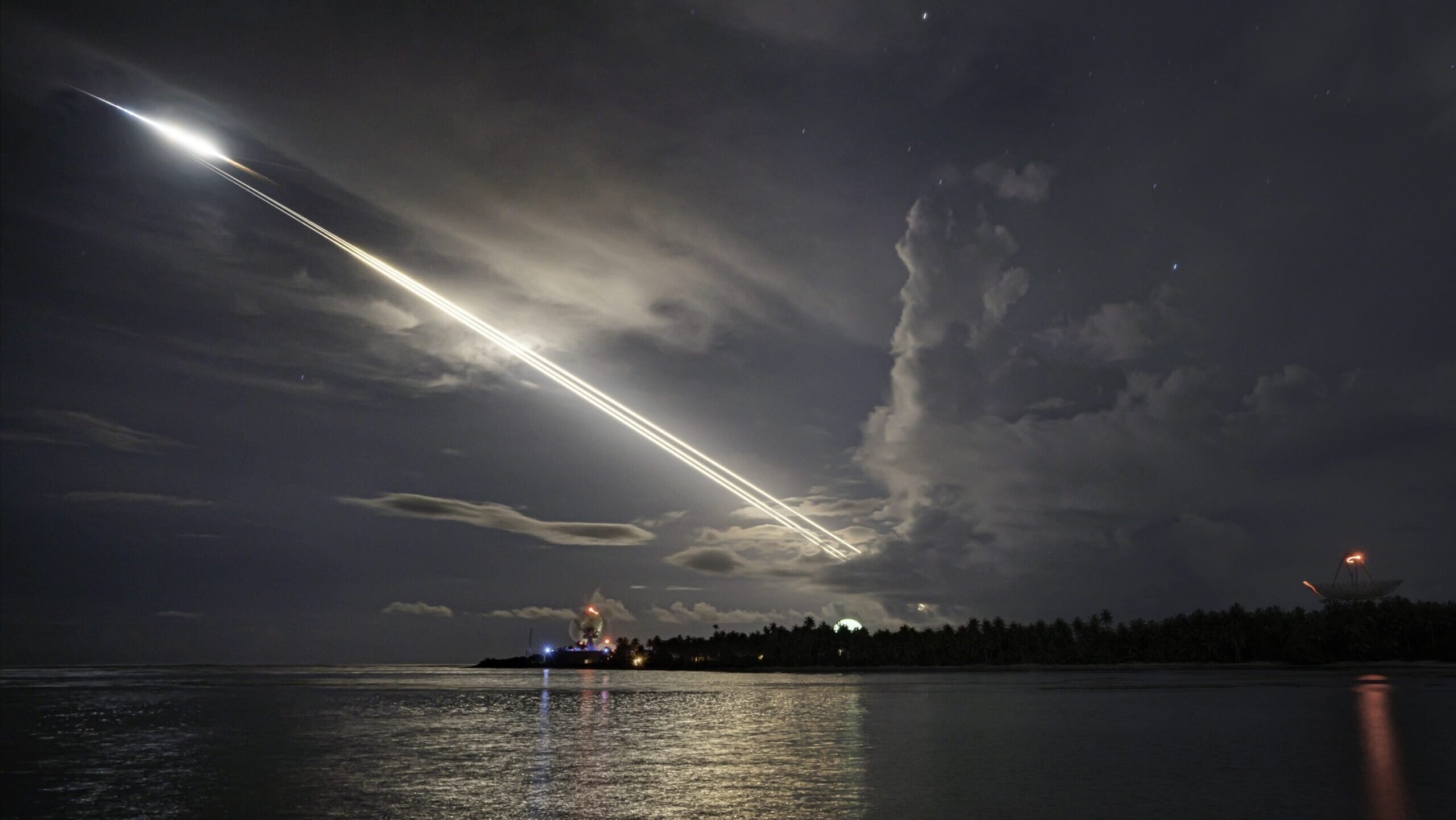
Pictured is a 2023 test launch of an unarmed Minuteman III at the Kwajalein Atoll, in the Republic of the Marshall Islands. (U.S. Army photo by Amy Hansen)
WASHINGTON — Lockheed Martin has been awarded nearly $1 billion to develop a new reentry vehicle for the LGM-35A Sentinel intercontinental ballistic missile (ICBM), the Pentagon announced Monday evening.
The $996 million award for the Mk21A reentry vehicle was sole-sourced to Lockheed following a technology maturation and risk reduction contract where the defense giant was the sole participant.
“We’re proud to partner with the U.S. Air Force to modernize our nation’s strategic deterrence capability, reinforcing our all-digital and model-based engineering approach and proven performance in reentry and strategic missions,” Jay Watson, senior director of Advanced Strategic Programs at Lockheed, told Breaking Defense in a statement following publication of this story.
“This contract is a critical step toward delivering this modernized capability to our customers, allowing us to continue our collaboration with the U.S. Air Force for the next 15 years,” he added.
A reentry vehicle houses a missile’s payload, in this case a modernized nuclear warhead dubbed the W87-1, which will be launched on the Sentinel ICBM. The Mk21A and W87-1 are expected to be integrated by fiscal 2030, according to FY24 budget documents. The Sentinel’s prime contractor is Northrop Grumman.
The ICBM recapitalization is one among several of the Air Force’s sprawling nuclear modernization efforts, where the service owns two legs of the nuclear triad. Air Force officials are currently conducting market research for a next generation reentry vehicle to follow the Mk21A, though its timeline for fielding is not clear.
The Air Force is also separately modernizing its air-based platforms that launch nuclear weapons. With prime contractor Boeing, the service is currently overhauling the venerable B-52 bomber to extend its service life for decades, and is also pursuing a new stealth bomber whose first flight is expected before the end of this year. Known as the B-21 Raider, the bomber is set to replace both the B-1 and B-2 and is also built by Northrop Grumman. (The Air Force can also launch nuclear weapons from fighters.)
An across-the-board refresh of the nuclear arsenal was begun during the Obama administrations and has continued, with relatively few changes, under the Trump and Biden administrations. Perhaps the biggest change to the plan from the Biden team was announced Friday, when the administration announced it would pursue a new design of a nuclear gravity bomb, called the B61-13. The Pentagon said the step was taken in direct response to the DOD’s 2022 Nuclear Posture Review to ensure the US has “additional options against certain harder and large-area military targets.”
UPDATED 10/31/23 at 12:55 ET with comment from Lockheed Martin.








